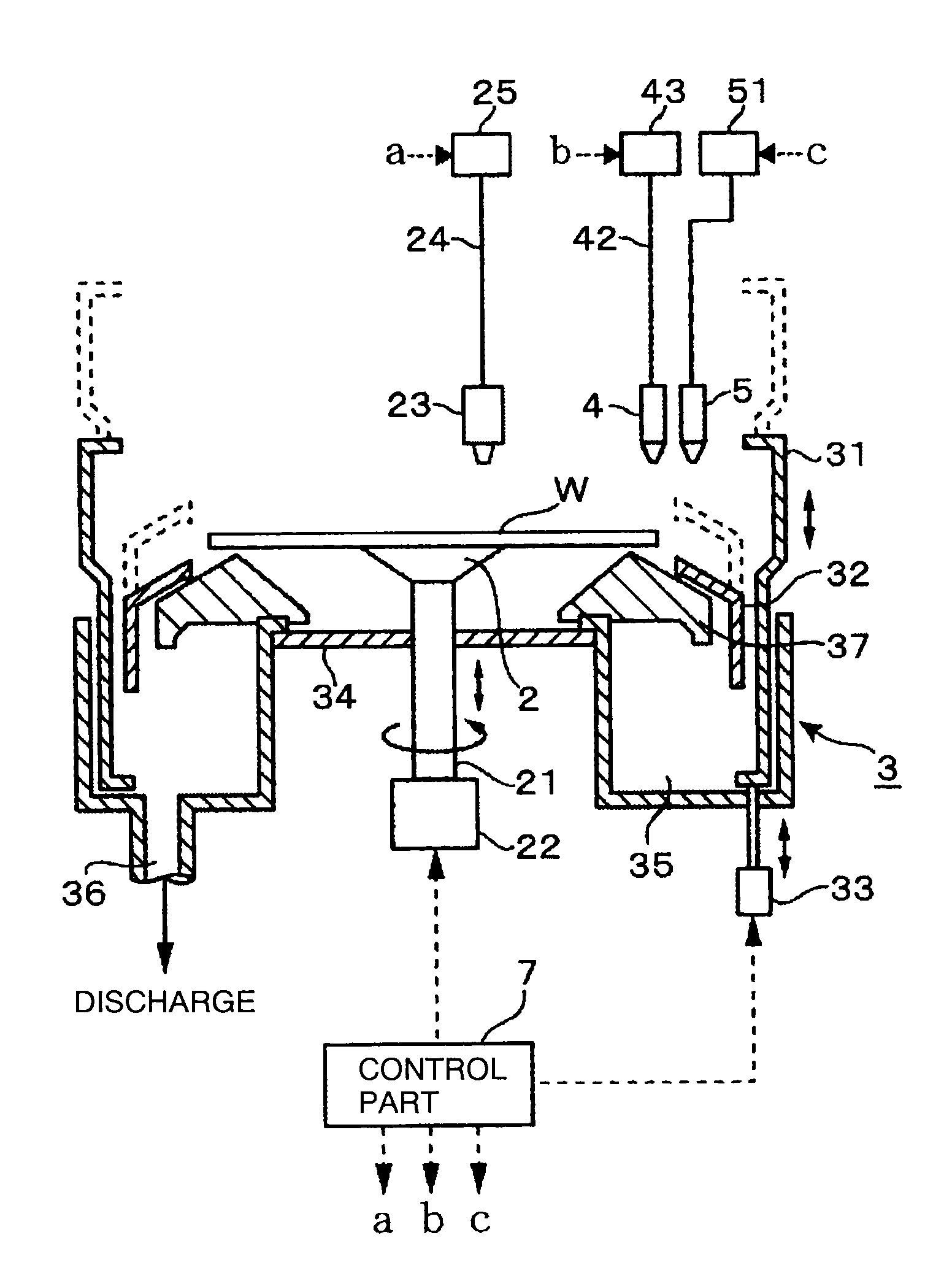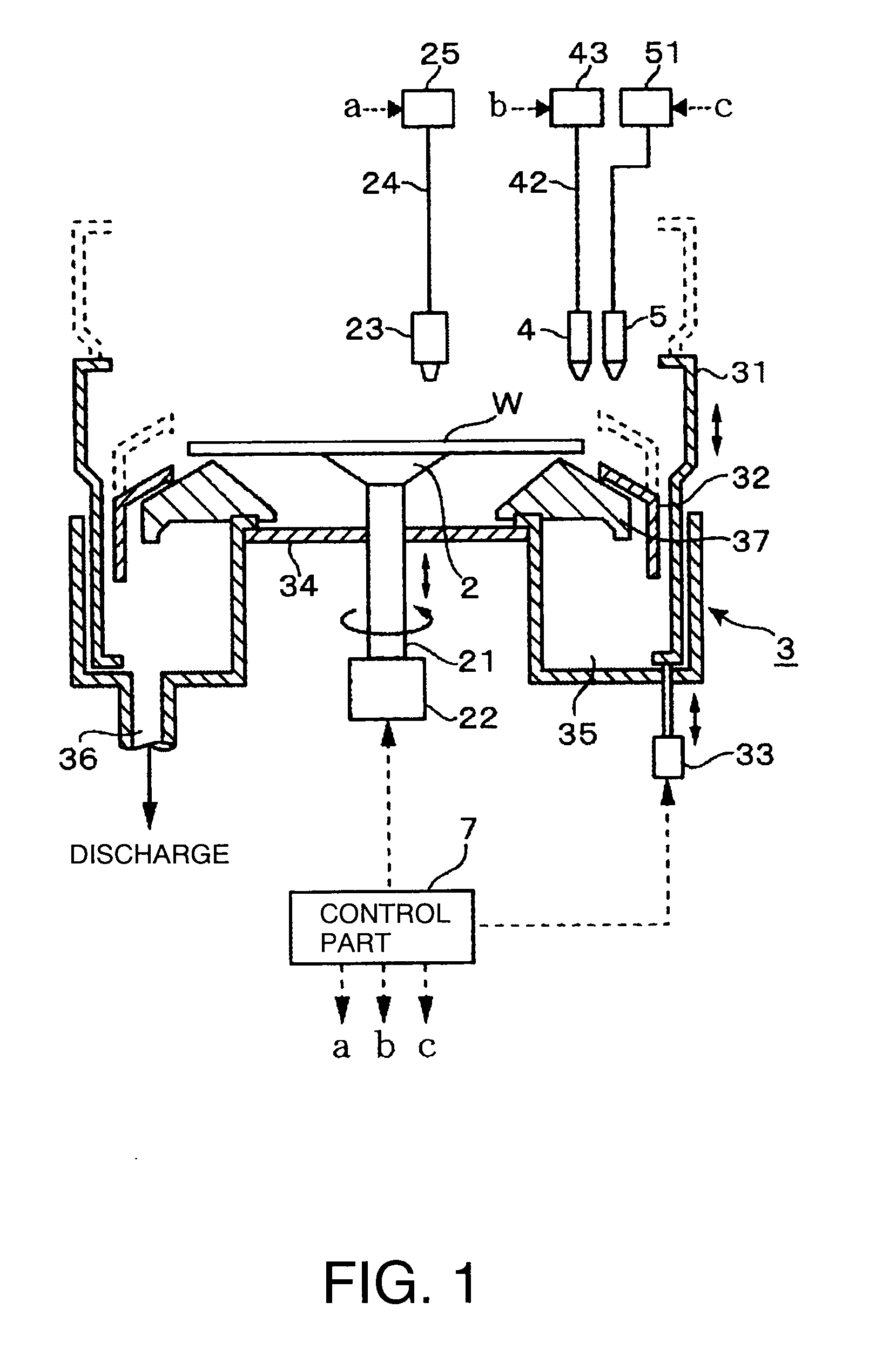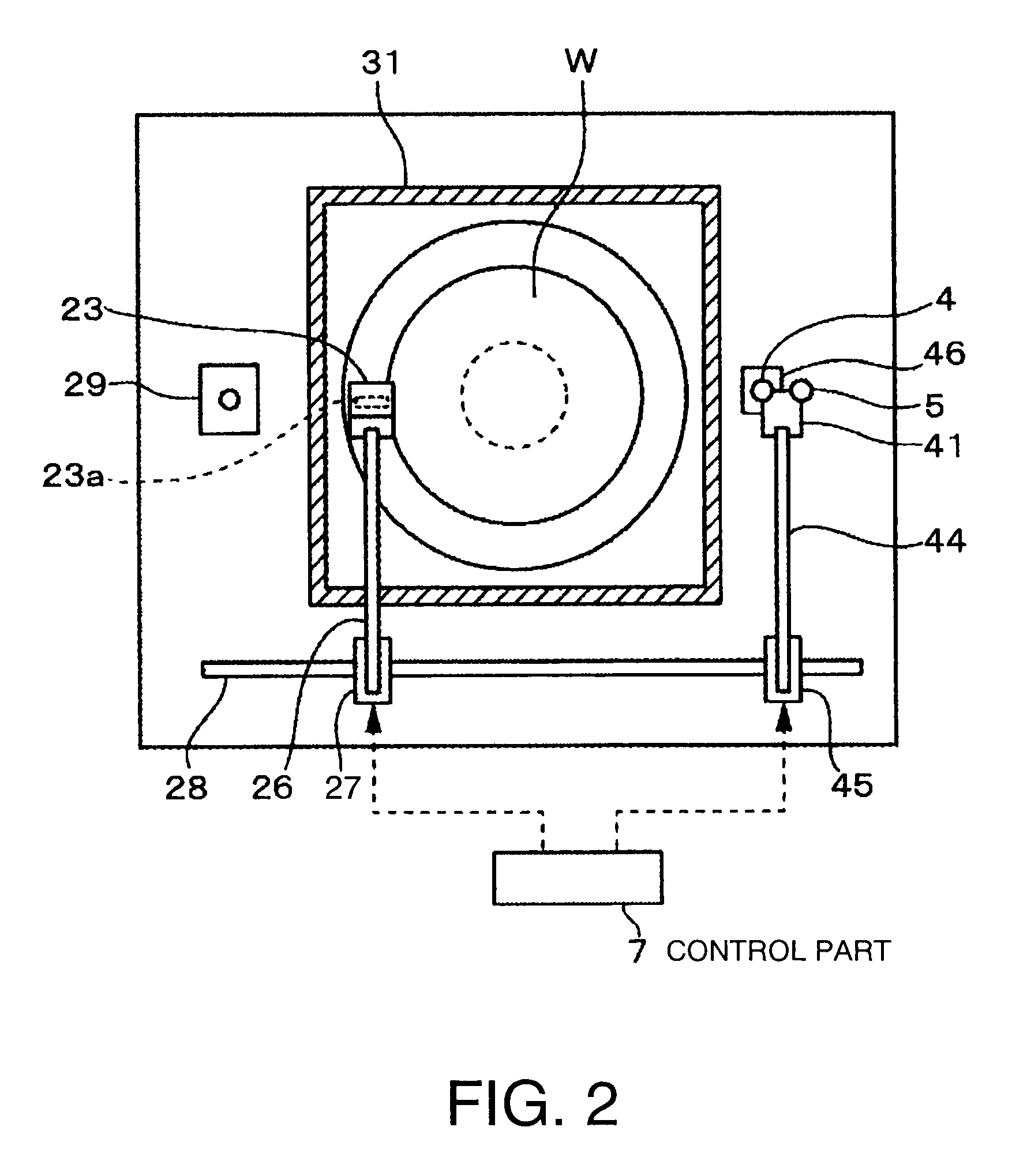Substrate cleaning method and substrate cleaning apparatus
a cleaning method and substrate technology, applied in the direction of cleaning processes, cleaning methods, instruments, etc., can solve the problems of remaining dissolved products, dissolved products cannot be fully eliminated by spin cleaning methods, and dissolved products may appear as development faults, etc., to achieve high cleaning effect and perform cleaning processes.
- Summary
- Abstract
- Description
- Claims
- Application Information
AI Technical Summary
Benefits of technology
Problems solved by technology
Method used
Image
Examples
first embodiment
[0060]A first embodiment of a substrate cleaning apparatus according to the present invention is described. The apparatus is combined with (integrated with) a development apparatus. In FIG. 1, the reference number 2 depicts a spin chuck which is a substrate holder that sucks and absorbs a central part of a rear surface of a substrate such as a wafer W, so as to hold the wafer W in a horizontal posture. The spin chuck 2 is connected via a rotation shaft 21 to a drive mechanism 22 including a rotation mechanism, and is configured to be capable of being rotated and moved in a vertical direction, with the wafer W being held by the spin chuck 2. In this example, a center of the wafer W is designed to be positioned on the rotation shaft 21 of the spin chuck 2.
[0061]A cup member 3 having an upper opening is disposed to surround the wafer W placed on the spin chuck 2. The cup member 3 is composed of an outer cup 31 whose upper part is a rectangular hollow pillar and whose lower part is cyli...
second embodiment
[0086]In this embodiment, a cleaning-liquid nozzle 4 and a gas nozzle 5 can be independently moved by separate nozzle arms. At first, a cleaning liquid is discharged from the cleaning-liquid nozzle 4 to a central part C of a wafer W. Subsequently, the cleaning-liquid nozzle 4 is slightly moved outward from the central part C of the wafer W, and the gas nozzle 5 is positioned to be opposed to the central part C of the wafer W. Then, an N2 gas is supplied from the gas nozzle 5 to the central part C so as to form a dried area 6. Thereafter, the cleaning-liquid nozzle 4 is moved in a vicinity of a peripheral part of the wafer W, with the cleaning liquid R being discharged (FIGS. 10A and 10B). Then, the discharge of the cleaning liquid R is stopped, and the wafer W is dried (FIG. 10C). On the other hand, after the N2 gas G has been supplied from the gas nozzle 5 to the central part C so as to form the dried area 6, the gas nozzle 5 stops the discharge of the N2 gas G.
[0087]A separation d...
third embodiment
[0089]Since a developer and a cleaning liquid are supplied, an atmosphere inside the cup 31 is high in humidity. In particular, immediately after the cleaning liquid R has been supplied, humidity of the atmosphere surrounding the area onto which the cleaning liquid R has been supplied is raised. Thus, in the step 3 of the first embodiment, when the gas nozzle 5 following the cleaning-liquid nozzle 4 is moved from the central part C of the wafer W toward the peripheral part thereof, there is a possibility that moisture of the surrounding atmosphere might adhere to a surface of the gas nozzle 5 so as to form liquid droplets thereon. In this case, the liquid droplets may fall down from the gas nozzle 5 to the dried area 6 and enter a recess formed in the dried area 6 to thereby cause a development fault. Thus, there is described a third embodiment capable of restraining a development fault which might be caused by the falling liquid droplets.
[0090]FIG. 11 shows a development apparatus ...
PUM
 Login to View More
Login to View More Abstract
Description
Claims
Application Information
 Login to View More
Login to View More - R&D
- Intellectual Property
- Life Sciences
- Materials
- Tech Scout
- Unparalleled Data Quality
- Higher Quality Content
- 60% Fewer Hallucinations
Browse by: Latest US Patents, China's latest patents, Technical Efficacy Thesaurus, Application Domain, Technology Topic, Popular Technical Reports.
© 2025 PatSnap. All rights reserved.Legal|Privacy policy|Modern Slavery Act Transparency Statement|Sitemap|About US| Contact US: help@patsnap.com



